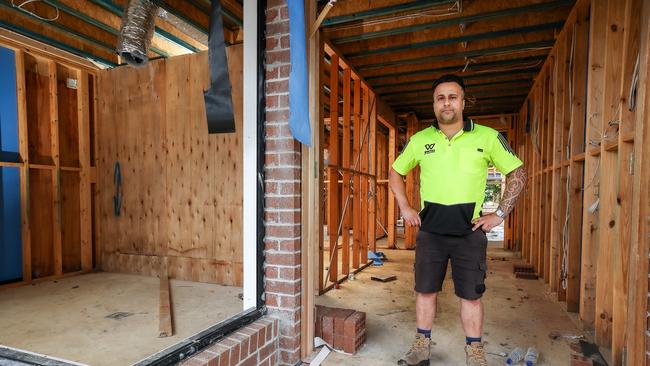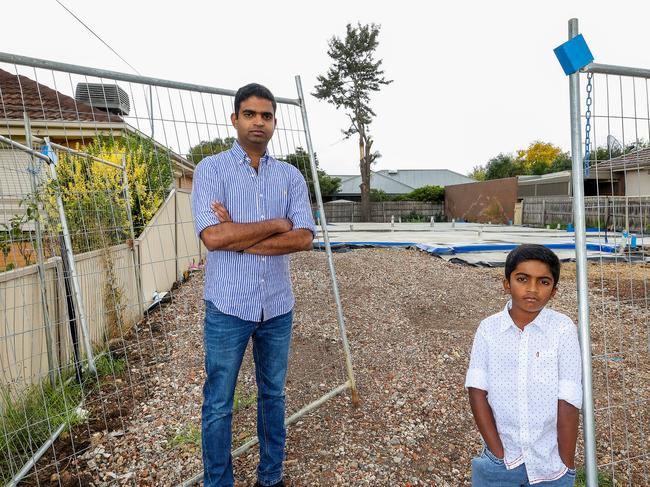
Building collapses – with Porter Davis the latest example – and bank regulator APRA’s desire to secure Australian bank safety in the light of the global banking problems are much more important to the national wellbeing than this week's Reserve Bank interest rate decision. Nevertheless I urge the Reserve Bank not make the same mistake it made when the economy was booming under the Covid stimulation but the banks’ information-gathering systems were too slow.
Back then the central bank did not lift rates fast enough and contributed to our inflationary problem and the latest crisis. Unlike the building crisis, where the facts and plain for the Reserve Bank to see, the slump in medium and small business confidence and its obvious repercussions are based on my anecdotal knowledge.
I set out the key elements in the bank credit squeeze in The Weekend Australian, writing on the Porter Davis collapse.
I can’t recall a time when a major bank had become so scared of the state of home building in Australia that is virtually stopped lending in the area. And an even larger banking force in dwelling building finance is demanding to see the detailed financials of builders before backing projects. They will discover that most project builders are operating in the red.
And so as a nation in the middle of a massive increase in migration and at a time of critical dwelling shortage, Australia is pulverising its capacity to build dwellings. Unless there is a drastic wake-up call we are in the process of mutilating a key industry.
Inevitably such a crisis will cause deep soul-searching that will go much further than looking at the structure and information-gathering systems off the Reserve Bank. We now realise the strong bank profits of recent years were generated by delegating too much risk to the builders at the base of the banking supply chain. Banks demanded fixed-price contracts and then embarked on a lending spree that enticed builders into taking on too many contracts, given the risk.
In other words, banking profits on new dwellings were generated using methods that actually contributed to the destruction of the base of the banking home loan supply chain – the home building industry.
Of course project builders must share part of the blame, and smaller builders that kept their operations contained often remain in good shape. But the vast army of “subbies” who supported the mass-production project-building industry are being mutilated as project builder after builder falls over and, given the bank squeeze, more carnage is on the horizon.

At this stage few in the media have grasped the magnitude of what is taking place in the building industry and are concentrating on the human disasters among those who can’t complete their homes and the tragedies among subcontractors.
But as the magnitude of what is happening to this key Australian industry becomes understood a much broader examination of our mistakes will take place and it is possible that harsh rectification measures will be strongly urged.
That will start with the end of fixed-term, fixed-price contracts, which of course will make bank housing lending less profitable and require different banking skills. But the anger with banks will go deeper. While the big builders share in the blame, bank executives should have been much more aware of what was happening at the base of their supply chain and that their methods of operation and over-lending were major contributors.
There will be community pressure for the banks to help the rectification process by providing the required additional finance after insurance claims to complete dwellings “frozen” by the building collapses.
And that will inevitably involve helping subcontractors who were caught in the morass.
Banks will fight hard to protect future profits from such an exercise, and APRA will see it as a movement that might leave us vulnerable if the world banking crisis spreads.
But if we don’t undertake a building industry restoration program we will be left with insufficient capacity for many years.
The Housing Industry Association has forecast a big fall in dwelling starts in 2023 and a recovery in 2024.
That recovery simply can’t happen if the home building carnage is allowed to continue.
We are already seeing the prices of existing homes edge up in the wake of a contraction of supply, generated because homeowners are holding back from selling their homes. But once the nation mutilates its ability to erect new dwellings the price of existing dwellings will rise much higher.
Compounding that upward thrust will be the great danger that the home building industry that emerges from the mutilation will duplicate the commercial building sector, where higher returns, unions and slow work practices boosted costs by 10 to 20 per cent.
Australia plans to embark on an enormous commercial building program to move the economy from a carbon base to renewables and hopefully other technologies. We are bringing in migrants to help us. But at the same time we are substantially contracting our home building industry.







The current unprecedented bank credit squeeze on the home building industry will not only cripple our capacity to build dwellings for years to come but is starting to affect morale in medium and small enterprises.